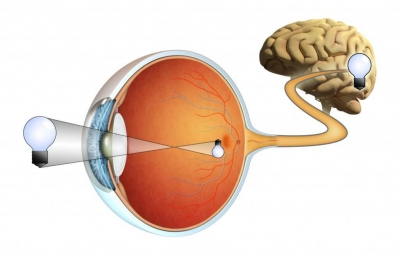
When rays of light from an object hit the cornea (outer shell of the eye) they are bent (refracted). The rays then refract more as they pass through the transparent lens. With distant objects, light is refracted mainly by the cornea – then thin lens only refracts light a little. With nearer objects, the lens becomes wider and it does more of the refraction.
The surface of the cornea is where light begins its journey into the eye. The cornea’s mission is to gather and focus visual images. Because it is out front, like the windshield of an automobile, it is subject to considerable abuse from the outside world.
The cornea is masterfully engineered so that only the most expensive manmade lenses can match its precision. The smoothness and shape of the cornea, as well as its transparency, is vitally important to the proper functioning of the eye. If either the surface smoothness or the clarity of the cornea suffers, vision will be disrupted.
Picture Credit : Google
